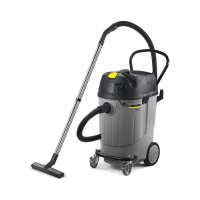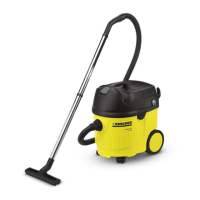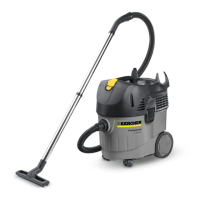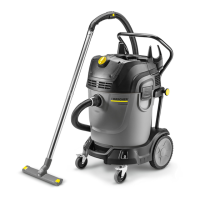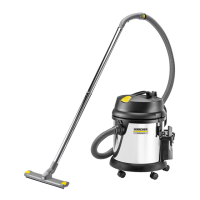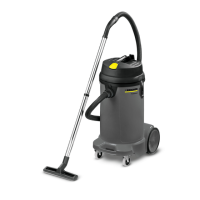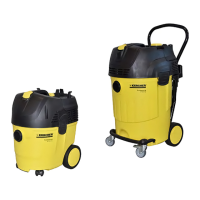Do you have a question about the Kärcher NT 611 Eco K and is the answer not in the manual?
Essential safety rules and precautions for operating the vacuum cleaner.
Additional safety measures and operational guidelines for the vacuum cleaner.
Proper grounding procedures to prevent electric shock and ensure safe operation.
Guidelines for proper grounding and the use of adapters to ensure electrical safety.
Recommendations for using extension cords and a warning against repairing power cords.
Instructions and precautions for servicing double-insulated appliances by qualified personnel.
Instructions for preparing the machine for wet vacuuming by fitting rubber lips.
Steps for performing wet vacuuming, including connecting the waste disposal hose and operating the machine.
Procedure for draining residual water and cleaning the tank after wet vacuuming.
Essential preparation steps and filter requirements for performing dry vacuuming safely.
Instructions for replacing squeegee rubbers with brush strips for dry vacuuming.
Steps for correctly mounting the paper filter bag and the membrane filter.
Procedure for replacing the coarse-dirt, flat pleated, or exhaust air filters.
Instructions for cleaning the float mechanism within the vacuum cleaner.
Diagnosing and resolving issues with the suction turbine, including power loss.
Troubleshooting problems like dust escape during dry suction and waste disposal pump malfunctions.
Key electrical parameters and performance metrics such as voltage, current, pressure, and airflow.
Physical attributes including weight, dimensions, and noise level according to standards.
Diagram showing all components with corresponding part numbers for identification.
Overview of different filter types, their order numbers, and suitability for various dusts.
Details on various accessories including dimensions, connection types, and materials.
| Power source | AC |
|---|---|
| AC input voltage | 220-240 V |
| AC input frequency | 50 - 60 Hz |
| Maximum input power | 2350 W |
| Annual energy consumption | - kWh |
| Cord length | 10 m |
| Cord storage | Yes |
| Standard nominal width | 40 mm |
| Type | Drum vacuum |
| Cleaning type | Dry&wet |
| Dust capacity | 55 L |
| Product color | Black, Grey |
| Dust container type | - |
| Airflow | 57 l/s |
| Hose length | 4 m |
| Noise level | 63 dB |
| Vacuum air filtering | Water |
| Ventilating pressure (max) | 235 mbar |
| Depth | 570 mm |
|---|---|
| Width | 430 mm |
| Height | 860 mm |
| Weight | 23000 g |
